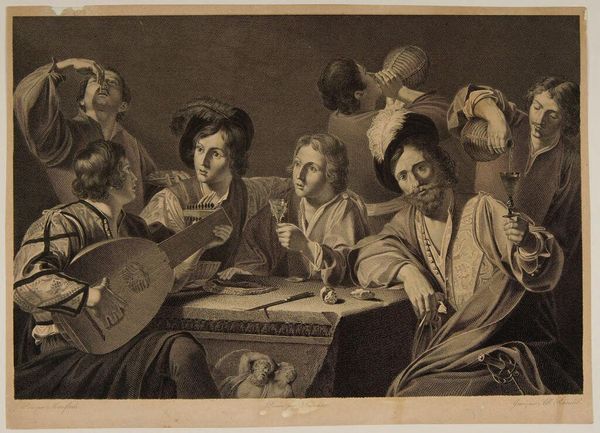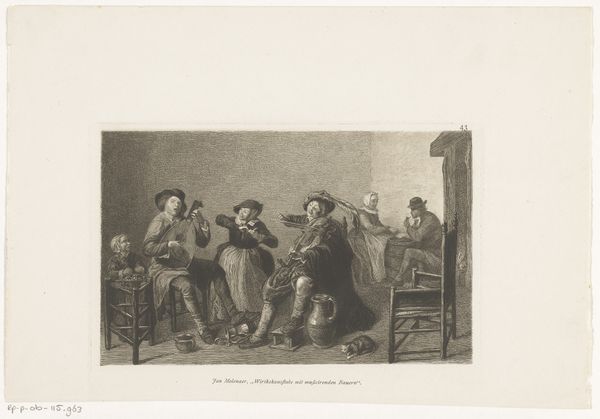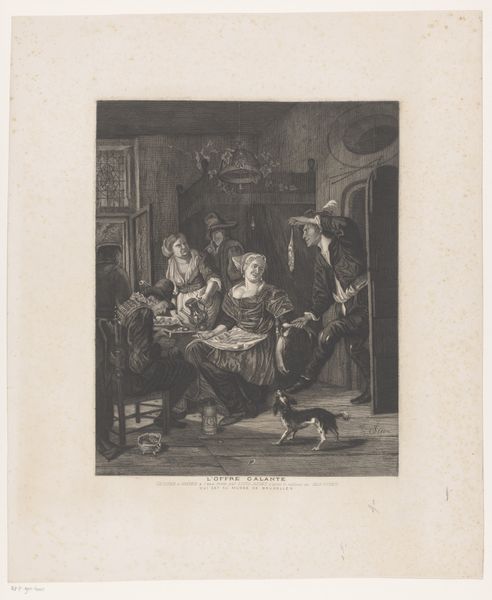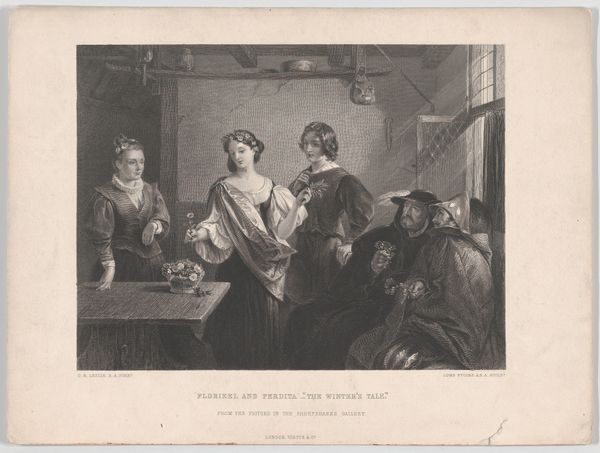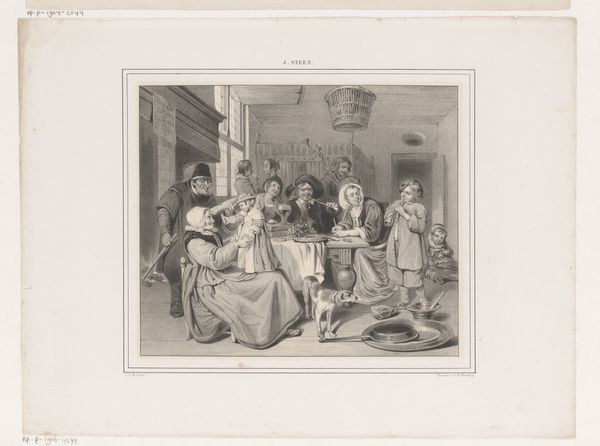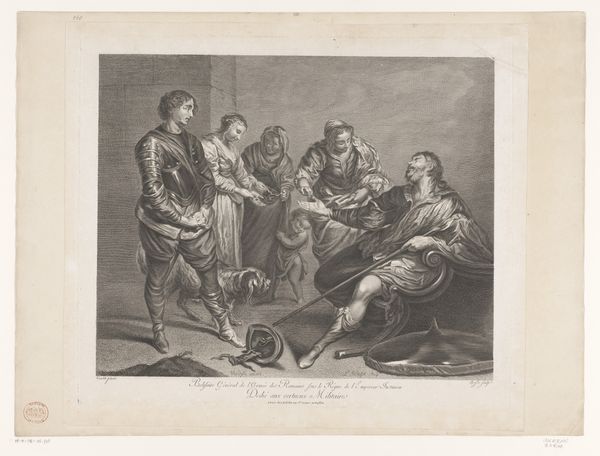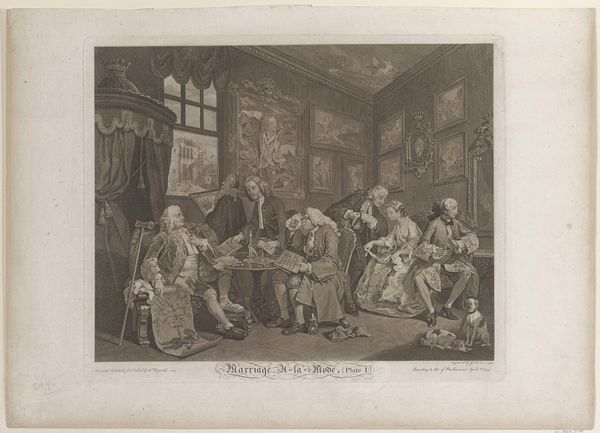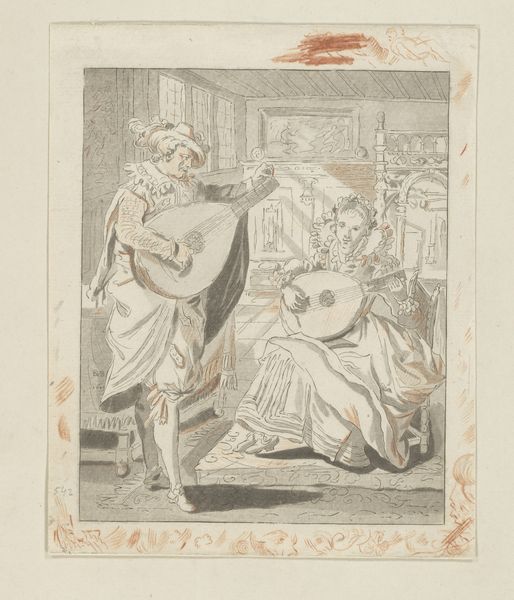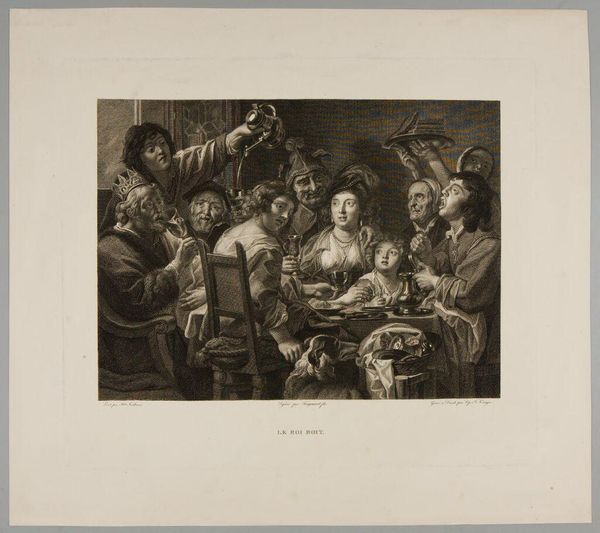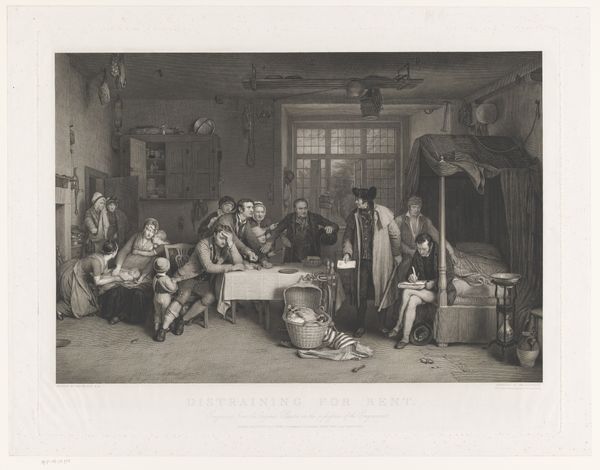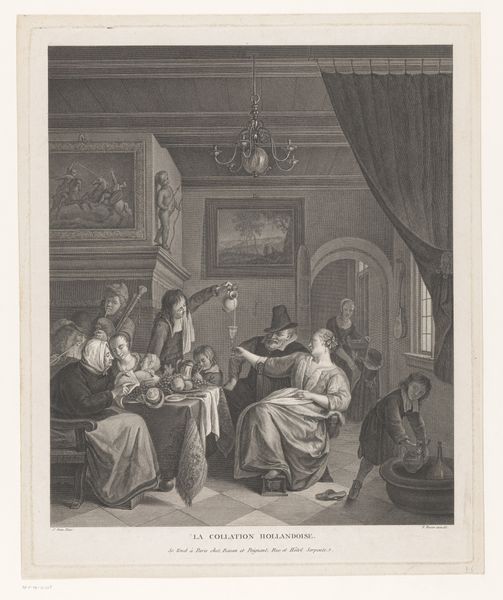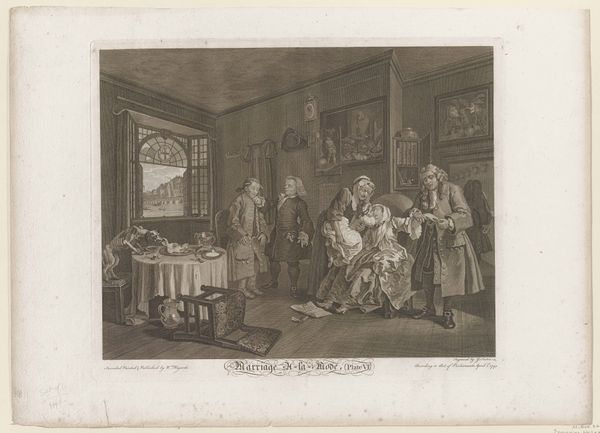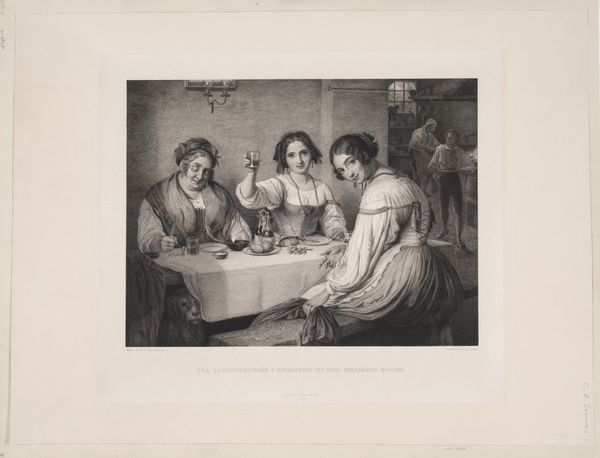
Dimensions: height 440 mm, width 530 mm
Copyright: Rijks Museum: Open Domain
Editor: This engraving, "Card Players and Lute Player," made between 1785 and 1792, depicts a group of elegantly dressed individuals gathered around a card table, with a musician providing accompaniment. It has an air of playful leisure. What do you see in this piece, in terms of social dynamics and historical context? Curator: I see a carefully constructed performance of societal norms. The game of cards, the lute player—these are signifiers of leisure afforded by a certain social class. Consider the positioning of the figures: some intently focused on the game, others more loosely observing, even embracing. How does this image reflect or perhaps even challenge the expected roles of women and men within that society? Editor: I notice the women are present, participating in the card game, but it seems they are also objects of the male gaze, especially the one with the embracing man. Was this image trying to make a statement about women in the late 18th century? Curator: Precisely. Remember, the Enlightenment era was marked by discussions of reason and rights, but these ideals were often selectively applied. The image seems to hint at the constrained autonomy of women; their participation is conditional, their bodies objects of scrutiny. We can even ask, is there a critique being offered of the elite, or simply a perpetuation of its power? What is your impression? Editor: That’s a great question. Perhaps both? On one hand, the image highlights their leisure, but on the other, by showcasing their interactions, it might subtly critique their social dynamics. Curator: Exactly. Thinking about the depiction of wealth, privilege, and perhaps an underlying tension within that group, we can better understand how images like these shaped perceptions and potentially spurred dialogue about societal hierarchies. Editor: I see that now! Examining the dynamics within the image provides so much to think about. Thank you for pointing that out! Curator: My pleasure. Analyzing art in its historical context enriches our view.
Comments
No comments
Be the first to comment and join the conversation on the ultimate creative platform.
